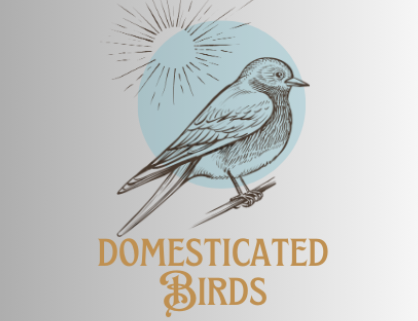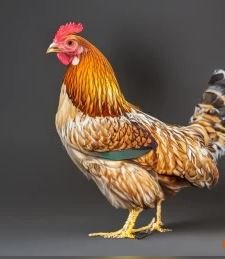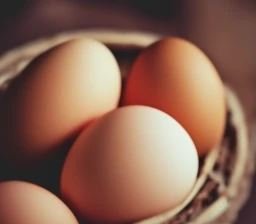Know Gold Laced Wyandotte chicken, It’s origin and history, appearance, hen vs rooster, Egg production, about chicks at every age, their diet and nest setup, price, owner suitability and everything in detail.
Introduction
Ever heard of a chicken that’s both a showstopper in your backyard and a reliable egg-layer? Meet the Gold Laced Wyandotte chicken. This breed is known for its beautiful feathers, friendly personality, and great egg production.
Gold laced Wyandotte chicken Origin and History
Where Did It Originate?
The Gold Laced Wyandotte chicken got its start in the United States back in the late 19th century. It was bred to be a great all-purpose chicken, offering both beauty and utility.
Name of City and Country
The breed was first developed in upstate New York, USA.
Name of Farmers and Scientists Involved
The development of the Gold Laced Wyandotte involved several breeders, including H.M. Doubleday, John Ray, and L. Whittaker. Remember, we are not sharing these names confidently because their role is not documented entirely.
Is It a Hybrid or a Real Breed?
The Gold Laced Wyandotte is a recognized real breed, not a hybrid, with a well-established standard among poultry associations.
Why Was It Named As?
The breed is named after the Wyandotte Nation, a Native American tribe. The “Gold Laced” part of the name refers to the intricate gold and black feather pattern that makes these chickens so distinctive.

Gold laced Wyandotte chicken Appearance
Gold Laced Wyandotte Hen vs. Rooster
Gold laced Wyandotte chicken Colors
Hen: Gold Laced Wyandotte hens have a rich, golden-brown base color with black lacing around each feather, creating a striking and intricate pattern.
Rooster: Roosters share the same laced feather pattern but often exhibit more vibrant and contrasting colors, with a more pronounced black lacing on their golden feathers.
Size, Shape, and Weight
Hen: Typically weighs between 6-7 pounds. They have a rounded, robust body with a broad back and full breast.
Rooster: Roosters are slightly larger, weighing between 8-9 pounds. They possess a more upright and commanding posture, with a well-defined chest and back.
Comb and Wattles
Hen: They have a rose comb that is relatively small and flat, with medium-sized wattles that are red.
Rooster: Roosters have a larger rose comb, which sits prominently on their head. Their wattles are also red and more pronounced compared to hens.
Gold laced Wyandotte chicken Eggs
Start and Finish Egg-Laying Age
Gold Laced Wyandottes start laying eggs at around 5-6 months of age. They continue to be productive layers for several years, often laying well into their third or fourth year.
Gold laced Wyandotte chicken Egg Colors
The eggs of Gold Laced Wyandottes are typically a light brown color. This classic egg color is a favorite among many chicken keepers.
Here are 7 blue egg-laying hens.
Gold laced Wyandotte chicken Egg Production
Gold Laced Wyandottes are known for their steady egg production. On average, a hen can lay about 4-5 eggs per week, which translates to approximately 16-20 eggs per month, and around 200-240 eggs annually.
Gold laced Wyandotte chicken Egg Benefits
Quality: They have strong shells, reducing the likelihood of breakage, and rich, flavorful yolks that are ideal for a variety of culinary uses.
Nutritional Value: These eggs have high-quality protein, vitamins such as B12 and D, and minerals like selenium and iodine. The rich yolks indicate a healthy diet and good care of the chickens.
Culinary Versatility: The robust flavor and texture of Gold Laced Wyandotte eggs make them perfect for cooking and baking. Whether you’re making a simple omelet or a complex cake, these eggs enhance the taste and structure of your dishes.
Financial Benefits: Keeping Gold Laced Wyandottes can provide financial benefits as well. Their reliable egg production means you can reduce your grocery bills by relying on fresh, home-produced eggs. If you have a surplus, you can sell the extra eggs to neighbors or at local farmers’ markets, generating a small income.
Sustainability: Raising your own chickens and collecting their eggs contributes to a more sustainable lifestyle. It reduces the carbon footprint associated with transporting commercial eggs and ensures that your eggs come from well-treated, healthy birds.
Gold laced Wyandotte chicken Characteristics
Gold laced Wyandotte chicken Temperament
Gold Laced Wyandottes have calm and friendly temperaments, making them approachable and manageable breeds for backyard flocks. They are easy to handle and are often described as docile, which is a significant advantage for new chicken keepers and families with children.
Potential as a Pet
Due to their friendly and gentle nature, Gold Laced Wyandottes make excellent pets. They are not just productive egg layers but also delightful companions. These chickens can be quite affectionate, often coming up for petting or treats. They can adapt well to being around people and other animals.
Gold laced Wyandotte chicken Lifespan
Gold Laced Wyandottes can live for 6-8 years, and in some cases, even longer. Protection from predators can significantly extend their lifespan. Their hardy nature also means they are less susceptible to some of the common diseases.
Noise Level
For urban and suburban settings where noise levels can be a concern. Unlike some other breeds that can be quite vocal, Wyandottes tend to make louder noises when they are excited or alerting to potential threats.
Golden Laced Wyandotte Chicks
Golden laced Wyandotte chicks Appearance
Golden Laced Wyandotte chicks are incredibly adorable, with fluffy light brown and yellow down. As they grow, their feathering begins to develop, and the distinctive gold and black lacing pattern starts to emerge.

Golden laced Wyandotte Chicks at Different Ages
Day-Old Golden laced Wyandotte Chicks
Newly hatched Golden Laced Wyandotte chicks are tiny and covered in soft, fluffy down. They weigh just a few ounces and are very active from the moment they dry off. These chicks require a warm brooder environment, with temperatures kept around 95°F (35°C). They will spend most of their time under a heat source and need access to clean water and starter feed.
One-Week-Old Chicks
By one week old, Golden Laced Wyandotte chicks have started to grow rapidly. They are more active and curious, exploring their brooder more confidently. Their wing feathers begin to grow, and the first signs of their lacing pattern may start to show. It’s important to continue providing a warm environment, but you can begin to reduce the brooder temperature slightly each week.
Three-Week-Old Golden laced Wyandotte Chicks
At three weeks old, the chicks have developed more feathers, and their wing and tail feathers are becoming more pronounced. The golden and black lacing pattern is more visible, giving a glimpse of their future plumage. They are now more independent. The brooder temperature should be gradually reduced to around 85°F (29°C).
Six-Week-Old Golden laced Wyandotte Chicks
By six weeks old, Golden Laced Wyandotte chicks are almost fully feathered. They have grown significantly and are more active, often engaging in playful behavior. The lacing pattern on their feathers is now quite distinct. At this stage, they can tolerate lower temperatures and may be moved to a larger enclosure or a secure outdoor coop if the weather permits. Their diet can transition from starter feed to grower feed to support their continued development.
Three-Month-Old Chicks
At three months old, the young Wyandottes are well on their way to becoming mature chickens. They are almost full-sized and exhibit the characteristic laced feather pattern of the breed. They should have access to a balanced grower feed and plenty of space to roam and exercise.
Six-Month-Old Chicks (Point of Lay)
By six months old, Golden Laced Wyandotte hens are usually ready to start laying eggs. They have reached their adult size, and their beautiful laced plumage is fully developed. At this point, they should be transitioned to a layer feed to provide the necessary nutrients for egg production. You’ll start to see the first eggs.
Golden laced Wyandotte chicks Diet and Housing
Golden Laced Wyandotte Chicks Food
Here’s a straightforward guide:
- Starter Feed: High in protein (18-20%), essential for rapid growth. Feed this for the first 6-8 weeks.
- Grower Feed: After 8 weeks, switch to grower feed with slightly less protein (16-18%) until they start laying eggs.
- Layer Feed: Once they reach laying age (around 18 weeks), transition to layer feed rich in calcium to support egg production.
- Treats: Offer occasional treats like fruits, vegetables, and grains. Avoid overfeeding treats to maintain a balanced diet.
Golden Laced Wyandotte Chicks Nest Setup
Follow these tips:
- Bedding: Use straw or wood shavings for a clean and comfortable environment. Replace regularly to maintain hygiene.
- Warmth: Provide a heat lamp to keep the brooder warm, starting at 95°F (35°C) and reducing by 5°F each week until they are fully feathered.
- Water and Food Access: Ensure fresh water and food are always available. Use feeders and waterers designed for chicks to prevent contamination and spillage.
- Space: Make sure the brooder is spacious enough for the chicks to move around freely and explore.
Chicks diet and complete house setup.
Owner Suitability
Suitable Owners
Novice Chicken Keepers: Their easy-going temperament and resilience make them forgive of beginner mistakes in care and handling.
Families: Known for their gentle demeanor, Gold Laced Wyandottes are excellent companions for families with children. They tolerate handling well and can become pets that children enjoy interacting with daily.
Hobbyists: Enthusiasts looking for both aesthetic appeal and practical benefits will appreciate the dual-purpose nature of these chickens.
Small-Scale Farmers: For those managing smaller operations, Gold Laced Wyandottes are reliable layers that contribute to a sustainable egg supply. Their adaptability to various farming conditions ensures productivity with minimal fuss.
Unsuitable Owners
Purely Ornamental Interest: Owners solely interested in chickens for ornamental purposes without emphasis on egg production may find the dual-purpose nature of Gold Laced Wyandottes unnecessary.
Limited Space: These chickens thrive when they have ample space to roam and forage. Owners with restricted yard or coop space may struggle.
Noise Sensitivity: While not excessively loud, Gold Laced Wyandottes can vocalize during egg-laying or if they sense danger, which may not be suitable for owners prioritizing minimal noise levels.
Gold laced Wyandotte chicken Price
Golden laced Wyandotte Chick Price
Gold Laced Wyandotte chicks typically range from $5 to $10 each, depending on the breeder and availability. This makes them an affordable choice for new poultry enthusiasts.
Chicken and Rooster Price
Adult Gold Laced Wyandotte hens and roosters vary in price based on age and quality:
- Hens: Prices range from $15 to $25, with show-quality birds potentially costing up to $30 or more.
- Roosters: Similar pricing applies, generally between $15 and $25, with higher prices for superior quality roosters.
Where to Find Gold Laced Wyandotte Chickens for Sale
You can purchase Gold Laced Wyandottes from:
- Local Breeders: Check agricultural fairs, poultry clubs, and local ads.
- Poultry Farms: Visit nearby farms specializing in poultry.
- Online Hatcheries: Consider reputable hatcheries like My Pet Chicken, Cackle Hatchery, and Meyer Hatchery.
- Farm Supply Stores: Large retailers offer Gold Laced Wyandottes, especially in spring and summer.
Conclusion
Gold Laced Wyandotte chicken combines elegance with practicality, making it a standout choice for both aesthetic pleasure and productive farming. From their stunning plumage and gentle demeanor to their consistent egg production, these birds embody the ideal blend of beauty and utility. The Gold Laced Wyandotte proves its versatility and appeal. With proper care, these chickens not only enhance your poultry collection but also bring joy and fulfillment to every interaction, making them a cherished part of any family.
What Does a Gold Laced Wyandotte Chicken Look Like?
Gold Laced Wyandotte chickens have a rich, golden-brown base color with black lacing around each feather, creating a striking and intricate pattern.
Where to Buy Gold Laced Wyandotte Chickens for Sale?
You can buy Gold Laced Wyandotte chickens from local breeders, poultry farms, online hatcheries like My Pet Chicken, Cackle Hatchery, and Meyer Hatchery, and farm supply stores.
How Many Eggs Do Gold Laced Wyandotte Chickens Lay Per Year?
Gold Laced Wyandotte hens lay approximately 200-240 eggs per year.
What Is the Color of Gold Laced Wyandotte Chicken Eggs?
The eggs of Gold Laced Wyandotte chickens are typically light brown.
What Are Other Laced Wyandotte Chicken Breeds?
Other laced Wyandotte chicken breeds include the Silver Laced Wyandotte, Blue Laced Red Wyandotte, and Buff Laced Wyandotte.


